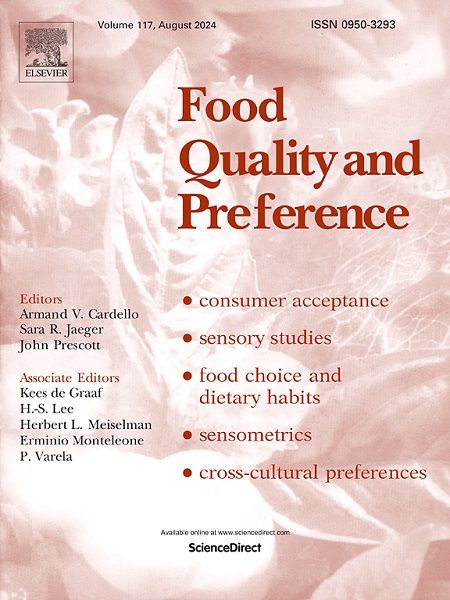A nudging intervention study targeting vegetable intake in a university cafeteria in Japan
IF 4.9
1区 农林科学
Q1 FOOD SCIENCE & TECHNOLOGY
引用次数: 0
Abstract
Nudging interventions are behavioral economic strategies that aim to influence decision-making by (re)designing the environment. Numerous studies have explored the use of nudging to promote healthier food choices; however, most have been conducted in Europe or North America. This study implemented nudging interventions aimed at increasing vegetable consumption, focusing on fukusai (Japanese side dishes), in a university cafeteria in Japan. Two distinct nudging strategies were implemented using paper tray sheets with different designs over a 5-week period. The week-2 tray sheet guided food placement according to traditional Japanese dining etiquette, emphasizing the designated area for side dishes. The week-4 tray sheet provided information on inadequate vegetable intake among young adults and recommended specific vegetable side dishes. The week-2 intervention led to a slight increase in side-dish sales, although the effect was not statistically significant. Unexpectedly, the week-4 intervention resulted in a significant decline in side-dish sales. Several factors may have contributed to the interventions' limited effectiveness, including the short duration of each intervention phase, the already-high baseline consumption of side dishes, and possible resistance to the persuasive messaging used in week 4. These findings highlight the importance of avoiding directive or persuasive messaging, which may have unintended negative effects. Our results contribute to the growing literature on cafeteria-based interventions among various countries and cross-cultural differences.
一项针对日本一所大学食堂蔬菜摄入量的轻推干预研究
助推干预是一种行为经济策略,旨在通过(重新)设计环境来影响决策。许多研究探索了使用轻推来促进更健康的食物选择;然而,大多数都是在欧洲或北美进行的。本研究在日本一所大学食堂实施了旨在增加蔬菜消费的轻推干预措施,重点是福岛菜(日本配菜)。两种不同的轻推策略在5周的时间内使用不同设计的纸盘。第二周的托盘单按照日本传统的用餐礼仪指导食物的摆放,强调配菜的指定区域。第4周的托盘单提供了关于年轻人蔬菜摄入量不足的信息,并推荐了特定的蔬菜配菜。第2周的干预导致配菜的销量略有增加,尽管效果在统计上并不显著。出乎意料的是,第4周的干预导致配菜销量大幅下降。有几个因素可能导致干预措施的有效性有限,包括每个干预阶段持续时间短,配菜的基线消费已经很高,以及对第4周使用的说服性信息的可能抵制。这些发现强调了避免指示性或说服性信息的重要性,这可能会产生意想不到的负面影响。我们的研究结果为越来越多的关于各国自助餐厅干预和跨文化差异的文献做出了贡献。
本文章由计算机程序翻译,如有差异,请以英文原文为准。
求助全文
约1分钟内获得全文
求助全文
来源期刊

Food Quality and Preference
工程技术-食品科技
CiteScore
10.40
自引率
15.10%
发文量
263
审稿时长
38 days
期刊介绍:
Food Quality and Preference is a journal devoted to sensory, consumer and behavioural research in food and non-food products. It publishes original research, critical reviews, and short communications in sensory and consumer science, and sensometrics. In addition, the journal publishes special invited issues on important timely topics and from relevant conferences. These are aimed at bridging the gap between research and application, bringing together authors and readers in consumer and market research, sensory science, sensometrics and sensory evaluation, nutrition and food choice, as well as food research, product development and sensory quality assurance. Submissions to Food Quality and Preference are limited to papers that include some form of human measurement; papers that are limited to physical/chemical measures or the routine application of sensory, consumer or econometric analysis will not be considered unless they specifically make a novel scientific contribution in line with the journal''s coverage as outlined below.
 求助内容:
求助内容: 应助结果提醒方式:
应助结果提醒方式:


